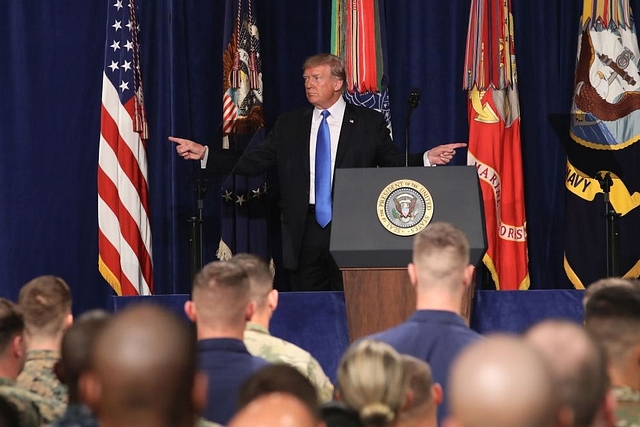
Coronavirus Pandemic: Over 25 Per Cent Americans To Come Under Semi-Lockdown As Positive Cases Cross 19,000 Mark
More than a quarter of Americans will be under a semi-lockdown this weekend under orders from governors of four states with the number of coronavirus cases in the US zooming to 19,101.
On Friday (20 (March), New York Governor Andrew Cuomo announced stringent regulations for the state, which has the highest number of coronavirus cases in the country.
His orders, which will come into force on Sunday (22 March), will totally prohibit onsite work for most businesses and offices in the state, shut non-essential stores and order people to stay indoors except for a few activities.
His restrictions, which he would not call "shelter in place", followed measures imposed on Thursday night by California Governor Gavin Newsom on people''s movement and on businesses in the most populous state in the US.
Those violating the restrictions face fines and can face charges.
Later, Governors of Illinois and Connecticut followed with similar orders.
New Jersey Governor Phil Murphy said that he would announce restrictions on Saturday.
Together the four states have a population of 88 million in the nation of 328 million, bringing a wide swath cutting across it from coast to coast.
President Donald Trump said Cuomo and Newsom were "taking very strong, bold steps, and I applaud them".
However, he refused to issue similar restrictions nationwide.
He said that while such restrictions were appropriate for New York and California, which were called COVID-19 "hotbeds", some other places did not have the same problem.
Anthony Fauci, who is the Trump administration''s chief scientist on the coronavirus issue, said that he strongly supports what Cuomo is doing.
Meanwhile, a person working in the office of Vice President Mike Pence, who is heading the Coronavirus Task Force, has tested for the disease, his spokesperson Katie Miller said on Friday night.
But she added, "neither President Trump nor Vice President Pence had close contact with the individual".
In his announcement on Friday, Cuomo said the restrictions he has place are not technically "shelter in place," as some have called similar regulations, because those orders are imposed in active shooter situations and are in effect only for a limited time, unlike the current restrictions that can continue for a long time.
Moreover, the new restrictions allow people out for errands and for walks if they keep the social distance.
However, most businesses and services except for essential ones like grocery stores, pharmacies, banks and transportation will be shut. Already, schools and entertainment were shut, as were restaurants except for takeouts and delivery.
He imposed special restrictions for the most vulnerable group - those over 70 - who have to wear masks while going out and restrict contacts with people.
He called the regulations "Matilda''s Law" after his mother, whom he has frequently mentioned while promoting preventive measures.
There were 8,403 cases in New York state as of Friday night, according to the Johns Hopkins University coronavirus tracker.
Of that, New York City had 5,151 cases with 29 deaths and Mayor Bill de Blasio called the city of 8.7 million the "epicentre" of the epidemic in the US.
He said that the police would enforce some aspects of the order like ensuring that people keep the "social distance" - two metres - between them to prevent contagion.
Newsom said that under the current statistical projection more than half the state''s population of 39 million could come down with it in eight weeks and the drastic "stay at home" order was needed to forestall it.
Six counties in Silicon Valley imposed similar restrictions earlier this week and Newsom was extending them state-wide.
(This story has been published from a wire agency feed without modifications to the text. Only the headline has been changed.)